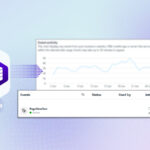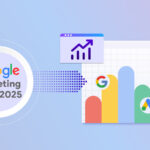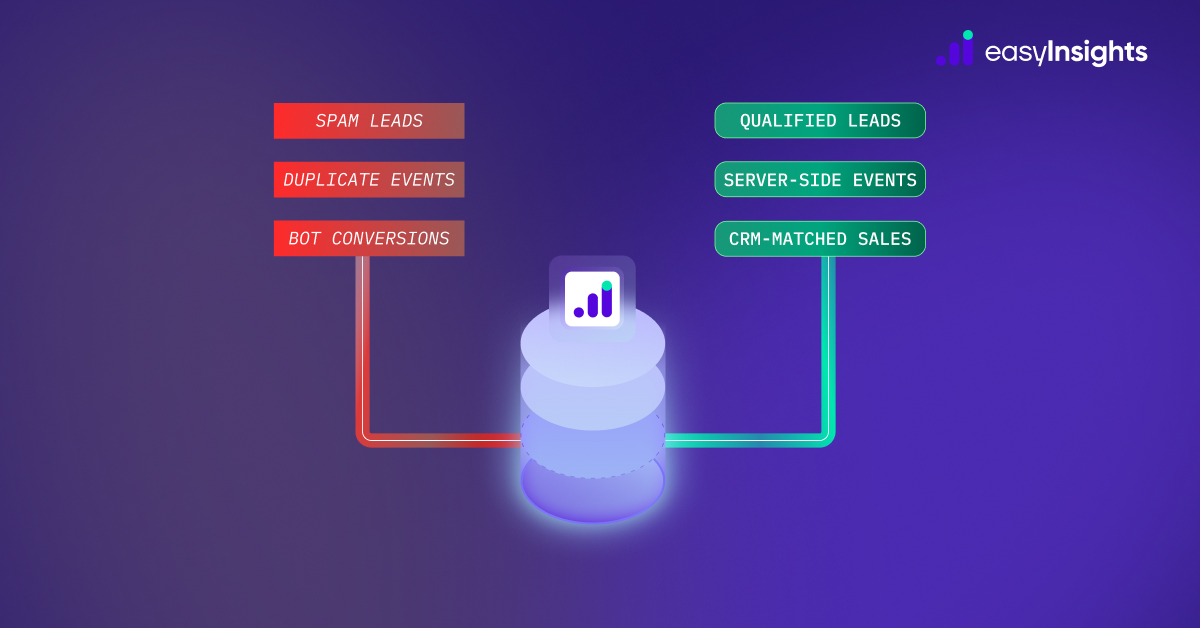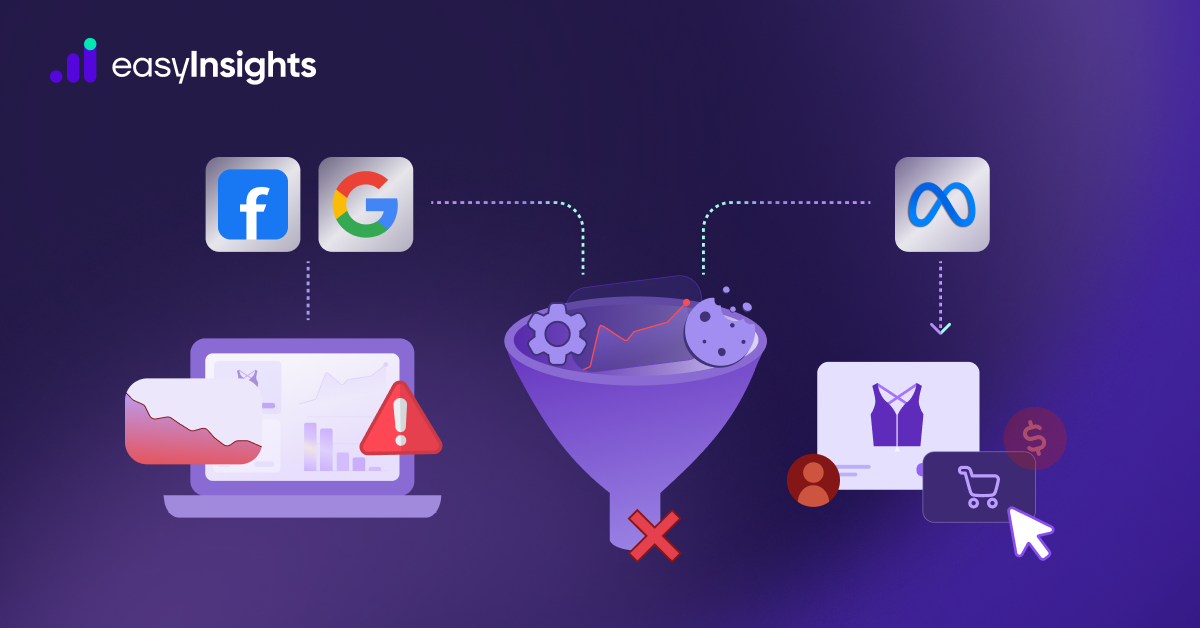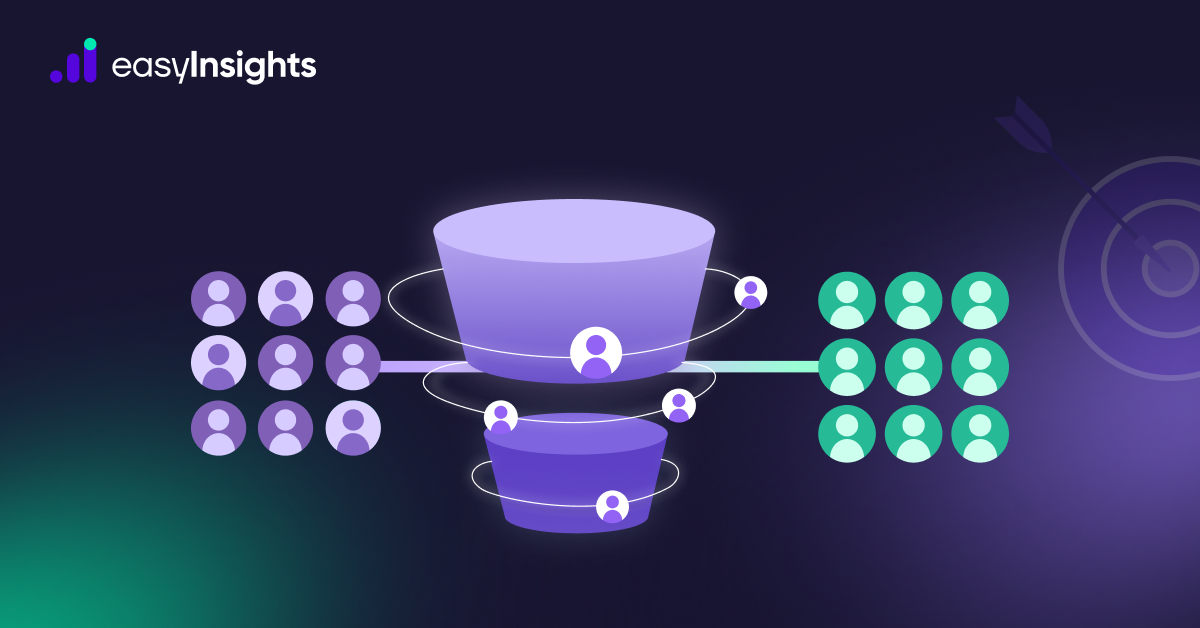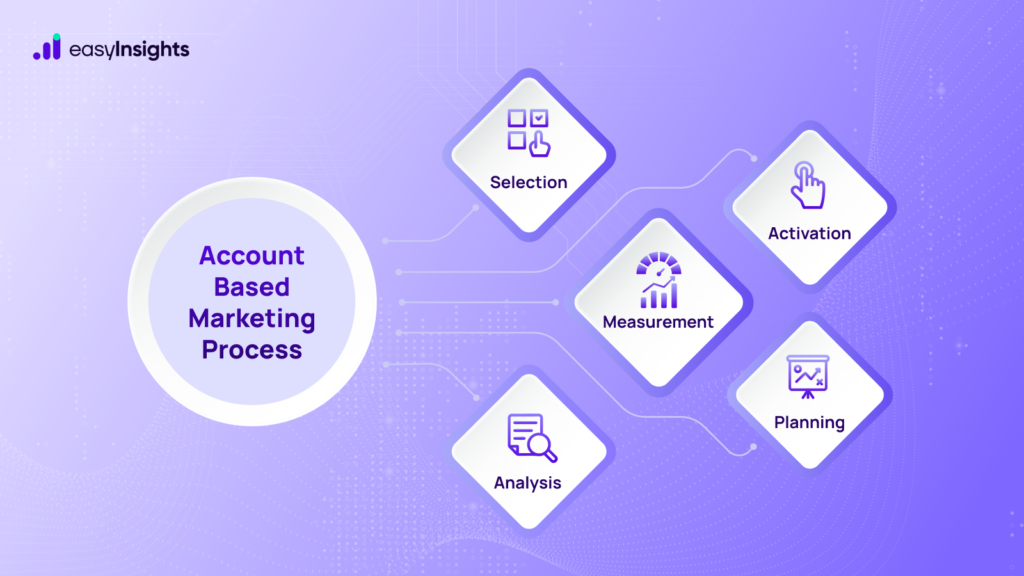
There’s no better marketing strategy than deeply understanding your target audience, what challenges they face, what solutions they’re looking for, and how your brand can help them succeed.
Account-Based Marketing (ABM) takes this idea to the next level. It’s a strategic approach that helps you zero in on the most valuable accounts, then use data and personalization to deliver exactly what they need, whether that’s a tailored offer, a timely solution, or meaningful engagement.
In this blog, we’ll walk you through everything you need to know about Account-Based Marketing, from how it works to how to do it right.
Jump ahead to:
What is Account-Based Marketing (ABM)?
Account-Based Marketing is a powerful B2B marketing strategy where brands focus on targeting specific high-value accounts instead of marketing to a broad audience. In simple terms, it’s like hand-picking the clients you want and creating personalized marketing campaigns just for them. Unlike traditional marketing, which tries to attract as many leads as possible, ABM helps brands identify their dream clients, understand their unique needs, and deliver content and offers that are tailored to those specific companies.
Let’s say you’re a software company selling a premium tool. Instead of running generic ads hoping someone clicks, with ABM, you pick 10–20 brands that are the perfect fit. Then, your sales and marketing teams work together to craft personalized emails, custom landing pages, and content that speaks directly to the challenges those companies face.
Fact: 92% of companies with mature ABM programs report it drives more ROI than any other marketing tactic.
Key Benefits of Account-Based Marketing
If you’re in B2B marketing and want to close bigger deals faster, Account-Based Marketing might just be your secret weapon. This approach helps businesses stop wasting time on random leads and instead focus all their energy on the accounts that matter. Let’s break down how ABM can benefit your business in simple terms:
1. More Relevant, Personalized Engagement: ABM enables hyper-personalized messaging across every touchpoint from ads and emails to events and content. This creates a more meaningful experience for high-value accounts and boosts the likelihood of engagement and conversion. It also extends beyond prospecting—ABM strengthens relationships with existing customers too.
2. Stronger Sales and Marketing Alignment: With ABM, marketing and sales work together from day one—identifying key accounts, defining goals, and coordinating outreach. This alignment ensures consistent messaging, better lead qualification, and more effective nurturing throughout the buyer journey.
3. Faster Sales Cycles and Higher ROI: By focusing on the right accounts and decision-makers early, ABM helps influence purchasing decisions faster and more efficiently. The result? Shorter sales cycles, better conversion rates, and significantly higher ROI compared to traditional lead-based marketing.
Also Read: How to Use First-Party Data for Personalised Marketing
ABM Strategies for B2B Marketing
Account-Based Marketing (ABM) starts with defining your Ideal Customer Profile (ICP) and then segmenting accounts based on key attributes like industry, size, or buying behavior. From there, you build personalized marketing programs across the channels that matter most to your target accounts—like events, email, and your website.
Your ABM playbook will vary depending on your industry, vertical, and product category, but some tactics have proven consistently effective. Now, let’s explore how these tactics work on the ground:
In-Person & Virtual Meetings
In the world of B2B marketing, nothing builds trust and momentum like direct interactions, whether in-person or virtual. These meetings offer a powerful way to connect with high-value prospects, create memorable touchpoints, and accelerate decision-making across buying committees.
In-person formats like conferences, VIP dinners, or curated roundtables allow sales teams to engage key decision-makers face-to-face in a more meaningful and focused setting. When done right, these experiences are tailored down to the invite list, branded gifts, and personalised follow-ups, ensuring every touchpoint is relevant to the account.
Similarly, virtual meetings through webinars offer the scale and precision that ABM thrives on. When designed with specific industries or companies in mind, webinars provide timely insights and build credibility with targeted audiences. In fact, 73% of B2B marketers consider webinars one of the most effective ways to generate quality leads.
Email outreach
In a world where decision-makers are constantly bombarded with messages, personalised outreach stands out as one of the most effective ABM tactics. It’s not about sending mass emails—it’s about delivering relevance to the right accounts at the right time.
Tailored one-to-one emails work well when engaging specific stakeholders, allowing you to craft messaging based on their role, company, and stage in the buying journey. In parallel, personalised email campaigns aimed at segmented account lists offer a way to scale outreach while maintaining that sense of relevance. These can include dynamic content, firmographic targeting, and messaging aligned with the account’s unique pain points.
Paid Ads & Personalised Experiences
In ABM, digital ad spend isn’t about volume—it’s about visibility with the right accounts. Platforms like LinkedIn, Facebook, and programmatic display networks allow you to target specific companies, job titles, or even IP ranges. This means your PPC and paid social campaigns can be hyper-focused—promoting a webinar, supporting a deal cycle, or following up after an RFP submission.
But the journey doesn’t end with a click. Once a target account lands on your site, website personalization kicks in. Using account data, industry signals, or firmographics, you can dynamically tailor headlines, messaging, and CTAs to match the visitor’s profile. Instead of a generic homepage, a prospect from a healthcare company might see industry-specific case studies or solutions relevant to their challenges, turning passive browsing into high-intent engagement.
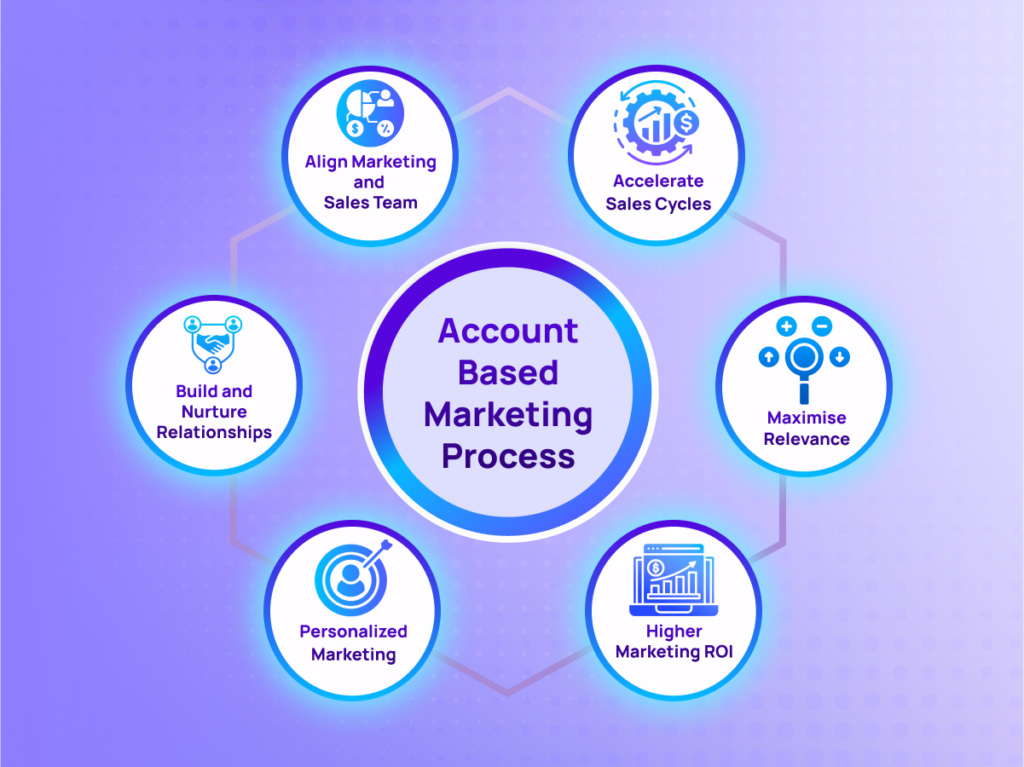
How to Implement an ABM Strategy
If you’re ready to shift from broad-based lead generation to highly targeted growth, here’s a step-by-step guide to building and executing an Account-Based Marketing (ABM) strategy:
1. Define Your Ideal Customer Profile (ICP)
Start by figuring out what your best-fit customer looks like. This includes companies that are most likely to convert, stay loyal, and generate high value over time. Consider firmographic and technographic data like:
- Industry
- Company size and revenue
- Location
- Tech stack used
- Budget and buying potential
This helps narrow your efforts and ensures you don’t waste time chasing poor-fit leads.
2. Build and Prioritise a Target Account List
Using your ICP, create a list of accounts that match those criteria. This list becomes the heart of your ABM strategy. You can source accounts from:
- CRM and customer data
- Intent data platforms (tools)
- Sales team inputs
- Website traffic analytics
Once the list is built, prioritise it—some accounts may need immediate focus (hot leads), while others can be nurtured over time.
3. Identify Key Stakeholders in Each Account
Most B2B buying decisions involve multiple people. So, map out the buying committee within each target company. Identify:
- Decision-makers (like CTOs, CMOs)
- Influencers (like team leads or analysts)
- Gatekeepers (like executive assistants)
Understand their roles, needs, pain points, and how they interact with your solution. This helps tailor your messaging.
4. Craft Personalised Messaging and Content
This is where ABM really shines. Instead of generic content, create assets that speak directly to the account’s industry, challenges, and goals. This could include:
- Personalised emails
- Custom case studies or landing pages
- Account-specific ads
- Direct mail with tailored gifts
- Webinar invites that address industry pain points
The more relevant and tailored the content, the more likely you are to earn attention.
5. Choose and Activate the Right Channels
Every account has preferred ways to consume information. Use the right mix of channels based on where your target audience spends time:
- LinkedIn or Facebook Ads (for B2B awareness)
- Email outreach
- Personalised website experiences
- Webinars and events
- Programmatic ads with IP or CRM targeting
Use multichannel orchestration but keep it focused and relevant.
Don’t forget to Align your Sales and Marketing Teams. ABM only works when both teams operate as one unit. That means: Jointly selecting accounts, Agreeing on messaging and outreach strategy & Sharing account insights and engagement data.
6. Measure, Optimize, and Scale
Track performance at the account level, not just leads. Key metrics include:
- Account engagement (email opens, ad clicks, site visits)
- Pipeline influence
- Meetings booked
- Conversion rates
- Revenue per account
Use these insights to improve your targeting, content, and messaging. As your ABM strategy matures, you can expand to new accounts and scale the tactics that work best.
Support Account-Based Marketing with EasyInsights
EasyInsights.ai helps B2B marketers power their ABM strategies by turning first-party data into a competitive advantage. We ensure accurate, enriched tracking of user interactions across your website, CRM, ads, and analytics platforms, so you can build precise account profiles and activate them across channels like Google Ads, Meta, and email. With EasyInsights, you can:
- Track every touchpoint using server-side and cookie-less tracking that captures high-quality data from form fills, page views, and user journeys—even in privacy-restricted environments.
- Enrich event data with CRM fields and custom identifiers, helping you understand which accounts are engaging and what content they care about.
- Sync audiences and conversions to ad platforms, enabling you to run personalised ads, retargeting, and exclusions with precision.
- Feed clean, structured data into tools like GA4 and Looker Studio for deeper insights, better segmentation, and smarter reporting.
In short, EasyInsights helps you connect your data stack, remove blind spots, and execute ABM programs that are informed by real-time behaviour—not just assumptions.
Also Read: How to improve event match quality with the first party data
Conclusion
Account-Based Marketing isn’t just another buzzword—it’s a focused, data-driven approach to engaging the accounts that matter most. When done right, ABM aligns your sales and marketing teams, sharpens your targeting, and delivers a higher ROI by personalising every touchpoint in the buyer journey.
But to make ABM work at scale, you need more than strategy—you need clean, reliable, and activated data. That’s where EasyInsights comes in. By capturing and enriching first-party data across your entire funnel, we help you identify the right accounts, track their behaviour, and reach them with the right message at the right time.
If you’re ready to build smarter, high-impact ABM campaigns, EasyInsights gives you the data foundation to make every account interaction count.
Book a demo with EasyInsights today!


